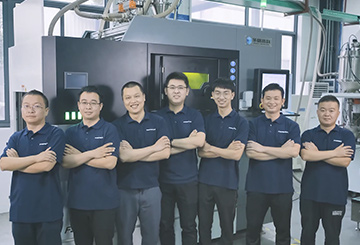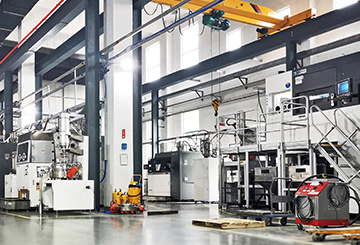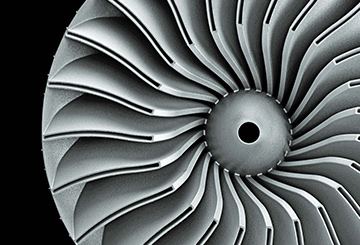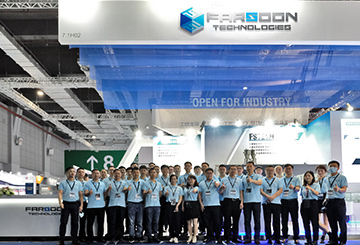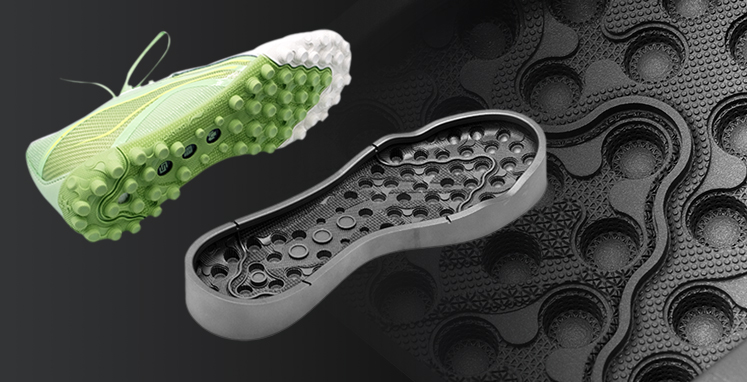Competition Distributing LLC is a globally recognized leader in manufacturing and supplying antique Harley-Davidson and Indian motorcycle parts, specializing in pre-war (1930s and earlier) models—some of the earliest motorcycles ever built. Based in Pennsylvania, the company ships rare original and precision-aftermarket parts worldwide, serving collectors, restorers, and enthusiasts who cherish these mechanical artifacts.
But preserving history comes with challenges: “Some of these bikes are over 100 years old and too valuable to ride—even if museums let you take them out.” With original parts vanishing, founders Sean and Kevin turned to additive manufacturing (AM) and Farsoon Technologies to bridge the gap. Using 3D scanning and Farsoon’s FS200M-2 LPBF (laser powder bed fusion) metal 3D printing system, they now recreate exact replicas of irreplaceable components—without compromising authenticity.

Image 1: “The Pennsylvania 8” Custom Built Motorcycle with 3D Printed parts. Courtesy: Sean Jackson
“These parts aren’t just for museum bikes. We want to make them accessible to the average enthusiast who wants to build, ride, and experience early motorcycles like they did 100 years ago,” said Sean. By merging cutting-edge AM with vintage engineering, Competition Distributing isn’t just restoring history—they’re keeping it on the road.
Alex Gao, Marketing Specialist at Farsoon Americas, sat down with Sean, Head of Operations at Competition Distributing, to discuss their journey into additive manufacturing and how it has transformed their business.
Exploring the Shift to Metal 3D Printing
Alex: Thanks for joining us, Sean! Competition Distributing has been a key player in this industry for a long time. What led you to adopt metal powder bed fusion (PBF) technology?
Sean: Thanks, Alex—glad to be here! My teammate Kevin and I had previous experience with polymer additive manufacturing, so we were already familiar with the potential of 3D printing. Initially, we outsourced all of our metal 3D printing, primarily using laser powder bed fusion (LPBF). It quickly became clear how much more efficient and flexible it was compared to traditional mold-making and foundry processes, which can take months. That realization drove our decision to invest in our own metal 3D printer—and that’s when we started talking to Farsoon.
Scaling Production with the Farsoon FS200M
Alex: We’re happy to have been part of your journey! Now that you’ve had the FS200M for some time, how has it been working for you?
Sean: The FS200M dual-laser medium-frame metal AM system has been an excellent fit for our needs. We’ve had it since October 2024, and honestly, time flies when the machine is constantly running! With it, we can now deliver high-quality, end-use parts in days instead of months—and most importantly, our customers love the results!
This machine has been a game-changer for us, especially for high-end collector projects. It allows us to explore new applications that simply weren’t possible before. Thanks to its reliability, we run it almost non-stop, maintaining stable, consistent production—which in turn, supports our future expansion plans.

Image 2: Cylinder Head Iteration based on 1928 Rudge Cycle Co. (3D Printed with Aluminum-alloy AlSi10Mg)
Success Stories: Restoring the Irreplaceable
Alex: That’s great to hear! Do you have any specific projects where the FS200M has made a significant impact?
Sean: Absolutely. One of the biggest challenges in vintage motorcycle restoration is sourcing frame components, particularly cast parts, which are incredibly rare and difficult to find.
Now, with our in-house metal 3D printing capability, we can scan original components, some of which are over 100 years old, and recreate them with unmatched precision—right down to the original casting imperfections. That level of authenticity is something our customers truly value, and it has completely changed how we approach restorations.
Material Selection & Future Plans
Alex: What materials are you currently running on the FS200M?
Sean: Right now, we primarily use 316 stainless steel, which works well for most of our frame assemblies. We’re also planning to expand into aluminum, 17-4 stainless steel, and even titanium for future projects.
Long term, as we scale up our manufacturing, we’d love to dedicate specific machines to designated materials, ensuring even greater efficiency and consistency in production.
Technical Support & Learning Curve
Alex: How has your experience been with Farsoon’s technical support?
Sean: Really solid. Our team is made up of engineers and mechanics, so communication with Farsoon’s technical team has been very efficient.
The biggest challenge was the learning curve—since we had never operated a metal AM system at this scale before. It took about three to four weeks of continuous printing to really dial in our process. Unlike traditional AM-optimized geometries, our parts are based on vintage castings, which aren’t always symmetrical or designed for additive. Figuring out the support layout and process settings took some fine-tuning, but once we got it right, the consistency has been outstanding.
I have to give a special shout-out to Drew and Ty from Farsoon’s support team—they’ve been fantastic whenever we had questions. I’d absolutely recommend you guys.
Farsoon Software: A Game-Changer
Alex: Is there anything else about your experience that stands out?
Sean: The Farsoon software has been a huge bonus. I can monitor and control prints remotely from my phone, adjust powder settings, and even remove individual parts from a build without canceling the entire job. That flexibility has saved us a lot of time and materials.
See It for Yourself at Rapid + TCT 2025!
Alex: Thanks, Sean, for sharing your journey with us! We’re also excited to announce that one of your restored vintage motorcycles will be on display at our Booth #1701 during Rapid + TCT 2025 in Detroit!
Sean: It’s our pleasure! We’re thrilled to showcase this piece of history to a larger audience. The Competition Distributing team will also be at the Farsoon booth to answer questions—so we’ll see you there!
About Competition Distributing:
Competition Distributing LLC has been a leader in antique motorcycle parts and accessories since 1968. With over 40 years of experience, they specialize in manufacturing high-quality aftermarket vintage Harley-Davidson parts, some dating back to 1910. Serving a global clientele of collectors and restorers, their mission is to supply top-notch original and aftermarket antique motorcycle parts through expert sourcing and advanced manufacturing processes. Their seasoned team of engineers and mechanics ensures that antique bikes remain road-ready, preserving the legacy of vintage motorcycles for enthusiasts worldwide.
Learn more: https://www.competitiondist.com/

